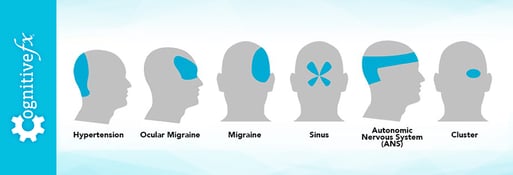If you’ve been experiencing headaches for weeks, or even months, after your initial COVID infection, you are not alone. Headaches are one of the most common neurological symptoms experienced by COVID-19 long-haulers, and some patients even experience daily, persistent headaches. But they’re often just one of many symptoms long COVID patients report. Other common symptoms include fatigue, brain fog, gastrointestinal issues, and more.
Most doctors and neurologists turn to medication to help long COVID patients overcome their headaches. You may have already tried several. Unfortunately, most patients tell us that medications only help a little, not at all, or even make their symptoms worse.
Part of the problem is that long COVID headaches have many different causes, many of which don’t have a direct ‘fix’ via medications. Over-the-counter or even prescription painkillers are not going to solve the problem.
Instead, you need to know what’s causing the headaches. It takes an experienced provider — like our treatment team at Cognitive FX — to figure out how your body was affected by COVID. Our years of experience treating patients with post-concussion syndrome led us to better understand and treat long COVID because both conditions similarly injure the brain. (You can read this article to learn what we discovered and how treatment works.)
In this article, we’ll cover:
Our treatment is designed to help post-concussion patients recover from persistent symptoms. After just one week of treatment, these patients report a 60% improvement in symptoms on average. Thus far, we’ve seen similar results with long COVID patients who pass our screening criteria. To discuss your specific symptoms of COVID-19 and determine whether you’re eligible for treatment at our clinic, schedule a consultation.
Characteristics of Long COVID Headaches
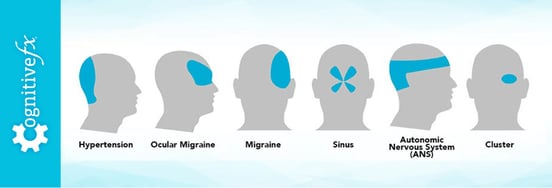
Headaches are one of the most common symptoms of COVID-19. In most cases, the headaches begin within the first few days after symptom onset and may even be the first sign of infection that patients notice (instead of the typical loss of smell and loss of taste).Curiously, patients with a headache during the first few days of illness had a lower risk of mortality. The incidence of headache as a symptom of COVID-19 has yet to be determined; reports share values anywhere from 10 to 70%.
Some COVID patients describe their headaches as moderate to severe pressure at the front of the head. Others say it spreads throughout the skull or that it feels like a pulsating pain on both sides of the head. About one in four patients who develop a headache experience migraine-like headaches after their COVID-19 diagnosis.
Most patients recover within a few weeks, but some develop long-term headaches. A study found that about 20% of patients who presented with headaches during the acute phase of COVID-19 still had chronic, daily headaches after three months, but this value had dropped to 16% after nine months. The authors noticed that the greater the intensity of the headache during the first few days, the greater the chances that it would persist for longer.
What Causes Long COVID Headaches
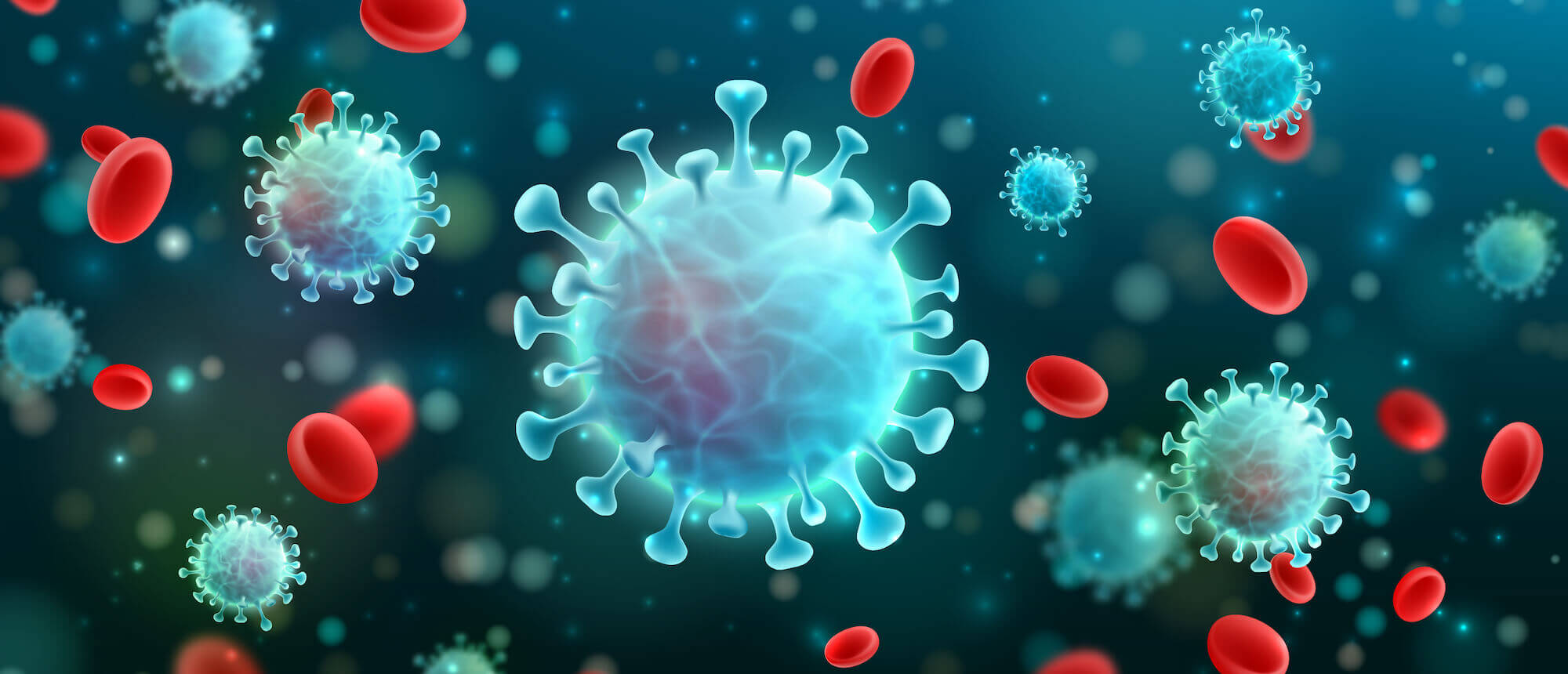
Despite being grouped under one name, headaches can vary significantly in intensity, location, frequency, and cause. The International Classification of Headache Disorders has defined more than 150 different types of headaches.
Long COVID patients can experience many of these types of headaches. You can even experience multiple types of headaches at the same time. It’s unclear why some long COVID patients develop headaches and others don’t. Researchers are studying a variety of hypotheses, including an inflammatory cytokine storm, vascular problems, or dysfunction of the autonomic nervous system (ANS), to name just a few. In this post, we’ll cover these possible headache causes:
- Inflammation
- Vascular issues
- ANS dysfunction
- Breathing issues
- Vestibular dysfunction
- Vision problems
- Predisposition to migraine
- Medication overuse
- Lifestyle changes
- Caffeine, alcohol, and medications
Because there are so many possible causes of headaches, not every treatment approach works for every patient. Knowing the root cause of the headaches you’re experiencing is key to choosing the best treatment plan.
Excessive Inflammatory Response
When SARS-CoV-2 — the virus behind the COVID-19 pandemic — enters the lungs, it triggers an immune response, attracting immune cells to the region to attack the virus, resulting in localized inflammation. This response from the immune system is normal; for most patients, the resulting inflammation goes away when the virus is destroyed.
However, sometimes this response goes into overdrive. In some patients, the immune system triggers a generalized hyperinflammation throughout the body involving chemical messengers called cytokines. This event is known as a cytokine storm. (Note that while some cytokine production is normal, a cytokine storm is not. It’s a much larger release of cytokines than normal, which can be dangerous to the body. If you think of normal cytokine release as a war, then a cytokine storm is like World War II.)
There is some evidence to suggest that cytokines can be related to headaches in patients with long COVID. For example, a study showed that patients with high levels of cytokines are more likely to experience headaches as compared to patients with low levels of cytokines. The connection between cytokines and headaches is not a new discovery. Similar links have been found with patients who suffer from migraines and tension-type headaches.
Vascular Problems
Researchers know that long COVID is linked to damage to the endothelium (the lining of the blood vessels). If this damage happens in the brain, it may also lead to post-COVID headaches.
The endothelium is a key part of the neurovascular unit, which is composed of vascular cells, glial cells, and neurons. Neurons need the resources (oxygenated blood, etc.) that the vascular system brings to them. If the endothelium is damaged by COVID-19, then the vascular system in that area will not function as well as it should, which in turn means those neurons will likely not function as well as they should.
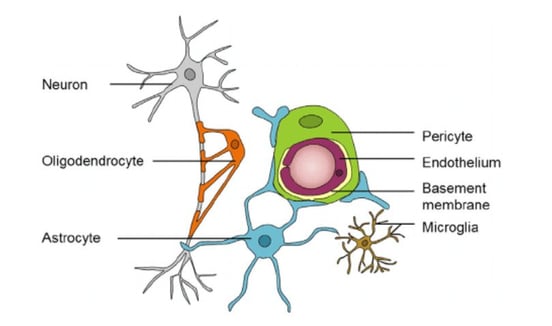
Image source: Nelson et al (2016).
The vascular system responds dynamically to the needs of neurons (a relationship known as neurovascular coupling, or NVC). If their communication is disrupted (either by direct damage to the endothelium from COVID-19 or through other post-COVID dynamics), it’s known as neurovascular coupling dysfunction. NVC dysfunction can cause a host of symptoms: headache, memory problems, brain fog, attention difficulties, and more.
NVC dysfunction underlies many long COVID symptoms and is one of the primary issues we treat at our clinic. NVC dysfunction is also closely linked with autonomic nervous system dysfunction, which can also cause post-COVID headaches and other symptoms.
Further reading: Neurovascular coupling dysfunction
Dysfunction of the Autonomic Nervous System
Headache is also a common symptom if patients suffer from autonomic disorders, which can happen as a consequence of long COVID.
The autonomic nervous system (ANS) controls heart rate, respiration rate, and many other bodily functions that keep us alive. The two most prominent parts of the ANS are the sympathetic nervous system (SNS) and the parasympathetic nervous system (PNS). Briefly, the SNS regulates your “fight or flight” response, and the PNS regulates your “rest and digest” processes.
Normally, these two work in equilibrium, allowing your body to respond to whatever happens around you. During long COVID, this balance is disrupted, leading to a variety of potential long-term effects, including exercise intolerance, headaches, blood pressure changes, urinary incontinence, heart palpitations, shortness of breath, and more.
No current studies are looking specifically at this type of headache in long COVID patients, but approximately two-thirds of patients with ANS dysfunction have orthostatic headaches. These headaches occur when the patients stand upright and are likely caused by the reduced blood supply to the brain. Many of these patients also have migraines.
Further reading: COVID-induced dysautonomia
Here are some other ways ANS headaches might present:
- A sensation of pressure that could be pounding or throbbing in response to exercise.
- A headache that starts in the back of the neck and spreads up around the back of the head to the temples (shaped like a crown),
- A headache that begins with jaw tension that might move across the face or over the top of the head.
- A sinus pressure headache that includes pressure or pain around the nose and cheekbones that spreads through the head. (Notably, this headache is omnipresent and does not change based on allergen exposure.)
- A headache accompanied by a soft bump or bumps on the head due to excess fluid pooling in a single location (also called “edema”).
To discuss your specific symptoms of COVID-19 and determine whether you’re eligible for treatment at our clinic, schedule a consultation.
Breathing Issues
It should come as no surprise that COVID can cause breathing dysfunction. Some long COVID patients experience inflammation throughout the body, including in their lungs. This inflammation can block the exchange of oxygen in lung tissue, resulting in lower oxygenation in the brain and body. Lower oxygen available to the brain can then lead to headaches, among other symptoms.
On an even more basic level, having difficulty breathing during acute COVID infection could translate to persistently altered breathing mechanics. It takes roughly 100,000 repetitions to make a new motor pattern. Because we breathe around 25,000 times per day, just four days of dysfunctional breathing during COVID could cause lingering issues.
Often, patients hyperventilate slightly. They take shallow, more rapid breaths. This leaves stale air in the lower lungs, which is not ideal for healing, and it raises oxygen levels relative to carbon dioxide levels. But carbon dioxide is essential for oxygen to be used in cells, so that extra oxygen ends up unused.
These breathing patterns can create the sensation of shortness of breath after COVID, reduce the oxygen accessible to the brain, and activate the sympathetic nervous system (further reinforcing the autonomic nervous system dysfunction discussed in the previous section). This dynamic leads to symptoms such as cold hands, brain fog, and headaches.
Some patients experience these poor breathing patterns even without the sensation of shortness of breath, so it’s important to have your breathing dynamics evaluated by a professional who can diagnose and treat the issue.
Vestibular Problems
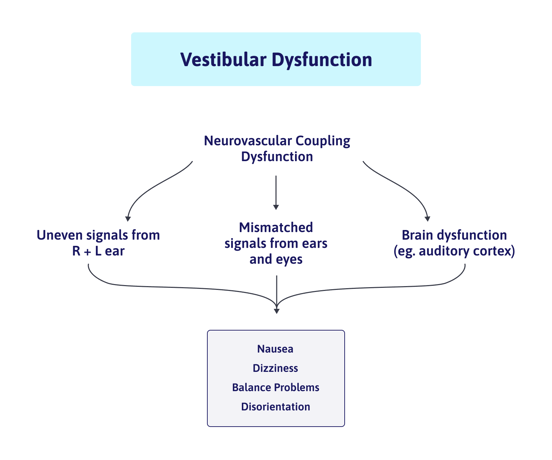
Vestibular symptoms like dizziness, vertigo, and lightheadedness are common in patients with COVID-19, not only during the acute phase but also as a sign of long-termpost-COVID-19 infection. Some long COVID patients are being diagnosed with “vestibular migraine” after their infection, despite having no risk factors or pre-existing conditions that would contribute to it developing.
Vestibular symptoms are often accompanied by headaches, and sometimes by nausea and sensitivity to light and/or sound. It’s common for patients to experience this headache pain when they wake up.
Under normal circumstances, when you’re asleep, your head moves only minimally. Most of your vestibular system thus does not activate; instead, “non-adaptive fibers” in the utricle and saccule of your ear take over. If this part of the vestibular system was affected by COVID, then you might experience problems during sleep and wake up with headache, dizziness, nausea, or other related symptoms. And if there is an additional imbalance or altered function in your vestibular system, that discomfort might only clear temporarily, only to worsen as you go about your day.
On the other hand, if you wake up feeling fine and then feel worse as the day progresses, it’s more likely that your problems stem from vision dysfunction. The eyes are refreshed overnight, but as they are fatigued during the day, they will contribute more and more to your symptoms. But that’s not to say the vestibular system can’t be the culprit if you wake up feeling fine at first.
Problems with the Eyes
Researchers know that SARS-CoV-2 infection can also have an impact on the eyes. About one in ten patients with COVID-19 experience at least one eye problem, such as conjunctivitis, dryness, redness, and sensitivity to light. In addition, some patients also experience a vision-related type of headache that affects the area behind the eyes.
Predisposition to Migraines
Patients with a history of headaches or migraine attacks are more likely to experience headaches following COVID infection. Alternatively, long COVID may be the ‘trigger’ needed to bring on migraines in a patient with a predisposition to migraines who hadn’t yet experienced them before infection.
Curiously, many patients with pre-existing headaches or migraines notice that headaches caused by COVID feel different. For example, some patients reported less frequency and reduced severity of their headaches after their coronavirus infection. It’s possible that less severe headaches could be due to increased time at home with family during the lockdown or new work-from-home arrangements.
Overuse of Medication
The easiest way to respond to a headache or other long COVID symptoms is to take some over-the-counter painkillers. However, if you do this frequently, you may develop rebound headaches. In other words, the same medicines that initially are useful to relieve mild headaches can trigger subsequent headaches if they’re used too often.
Many different types of medication can lead to rebound headaches, including over-the-counter painkillers such as acetaminophen (Tylenol) and NSAIDs such as ibuprofen (Advil, Motrin) and naproxen (Aleve). Prescription drugs, including ergotamine, triptan, opioids, and combination analgesics can lead to rebound headaches as well.
Lifestyle Changes Due to Long COVID
Headaches can be caused by lifestyle changes imposed by pandemic countermeasures (versus from post-COVID syndrome). For example, it’s easy to forget to drink water when wearing a mask for several hours, which inevitably leads to dehydration-related headaches. Even a mild case of dehydration can cause a headache. Typically, patients also experience fatigue, dizziness, and dry mouth. Dehydration headaches often get better with at-home remedies like drinking water and resting.
Caffeine, Alcohol, and Medications
Caffeine can cause headaches directly or when you’re in caffeine withdrawal. That said, in certain cases, it can also help relieve headaches. If you changed your caffeine consumption during or after COVID, then it could be contributing to your symptoms. Alcohol can also cause headaches in some people
Many common medications, or ingredients in medications, can bring on headaches. Birth control pills, nitrates, blood pressure medications, hormone replacement therapy… the list goes on. If you’ve changed your medication after COVID, or if your body isn’t metabolizing that medication the way it used to after your COVID-19 infection, then you might experience headaches as a result.
Long COVID Treatment Options for Headache and Other Symptoms
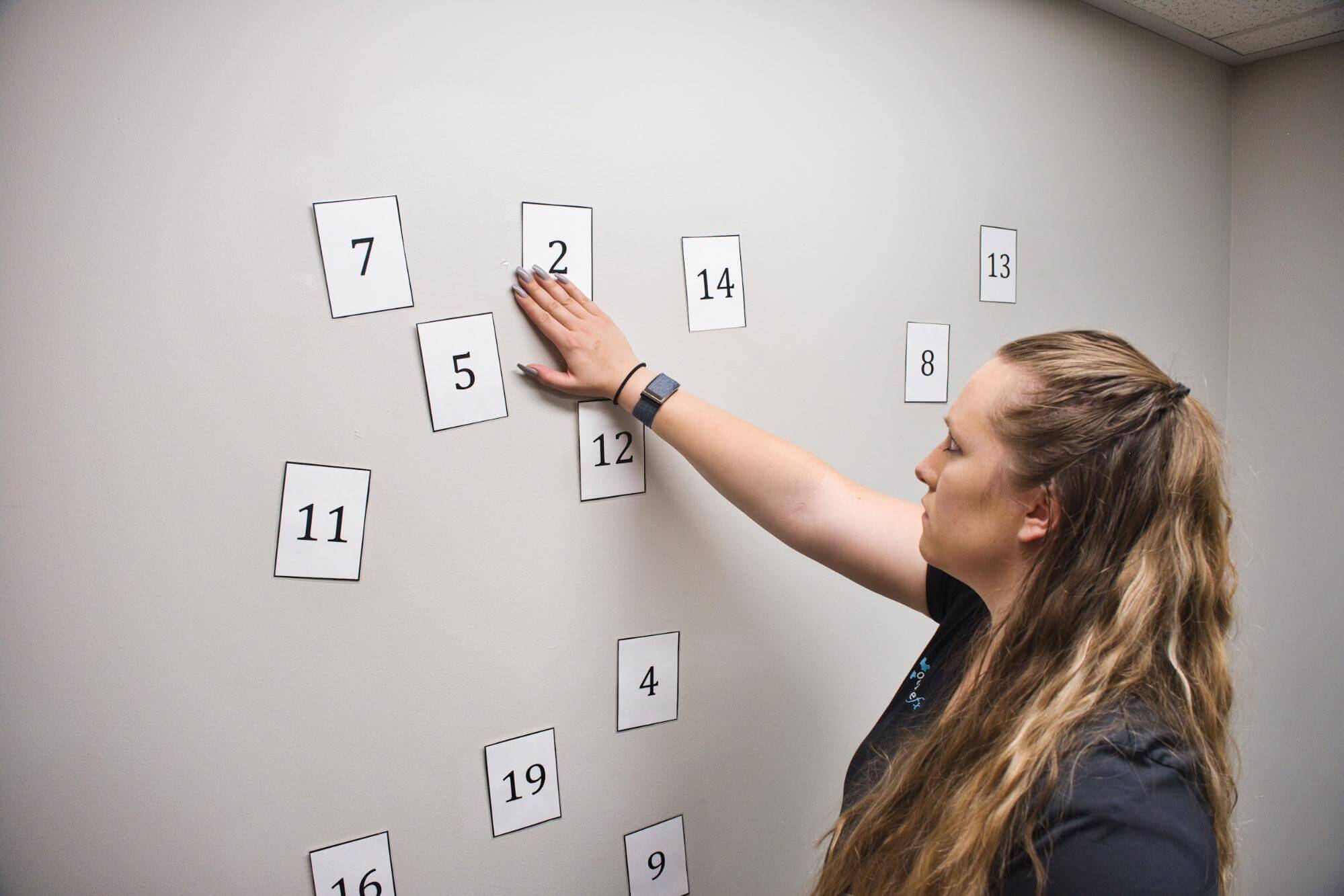
Headaches are common for long-haul patients, as is the use of over-the-counter analgesics to deal with the pain. However, many of our patients complain that the painkillers didn’t really work and may have even caused rebound headaches.
The problem is that these meds may be able to hide the pain for a while, but they don’t fix the problem. If you’re suffering from long COVID, medication can’t solve the problem by itself. You need an experienced healthcare professional who can help you identify the cause of the headaches and provide an appropriate treatment regimen to improve long COVID symptoms.
At our clinic, we use targeted, multidisciplinary therapies to treat the most common conditions resulting from brain injury, including neurovascular coupling dysfunction, autonomic nervous system dysfunction, vestibular dysfunction, and vision problems. We have modified our usual protocol specifically for long COVID patients, as they often need more attention to their breathing dynamics due to respiratory symptoms and may have cardiovascular complications that change how they can exercise safely.
Since not every case of long COVID is the same, any patient at our clinic needs to undergo a full evaluation by our team before starting treatment. Unlike most treatment providers, we have access to advanced brain imaging technology so we can determine what effect COVID-19 had on your brain’s vascular health. Here’s an explanation of how that scan works and why it matters for treatment, followed by what happens during treatment.
Why functional NeuroCognitive Imaging (fNCI) Makes a Difference in Post-COVID Treatment
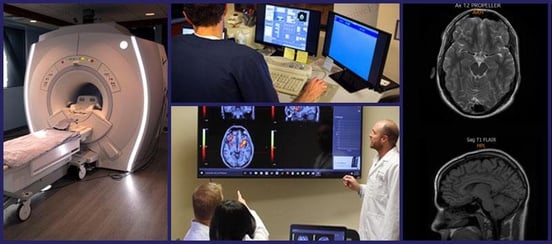
In a healthy brain, nerve cells receive nutrients and oxygen from the surrounding blood vessels. This connection, called neurovascular coupling, involves a complex, dynamic signaling process in which the nerve cells call for just the right amount of resources at just the right time.
However, long COVID disrupts this connection, often impairing the optimal functioning of multiple brain regions. When these brain regions can’t do their jobs well, it results in many of the physical and cognitive impairments you experience during long-COVID, such as headaches, brain fog, difficulty tracking conversations, difficulty multitasking, and more.
Our brain imaging technique, functional NeuroCognitive Imaging (fNCI), shows us which regions of the brain are suffering from NVC dysfunction. It looks at blood flow dynamics throughout 56 brain regions while the patient performs a series of standardized cognitive tasks. fNCI also looks at communication between brain regions.
Next, we’re able to map your scan data to brain functions such as object identification and decision-making. Here’s an example from a healthy patient:
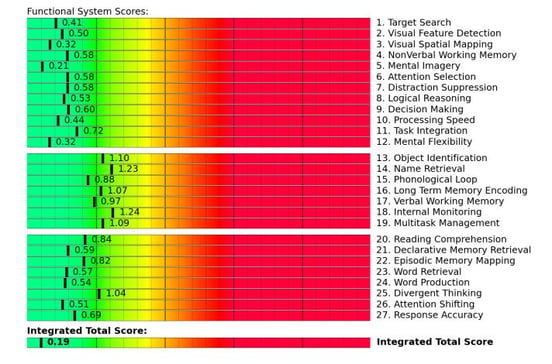
Armed with these results, we can tailor your treatment program to your specific needs. Most of our patients with long COVID report improvements after treatment, including breathing easier, experiencing fewer headaches, and feeling less dizzy and lightheaded.
Treatment for Long COVID at Cognitive FX
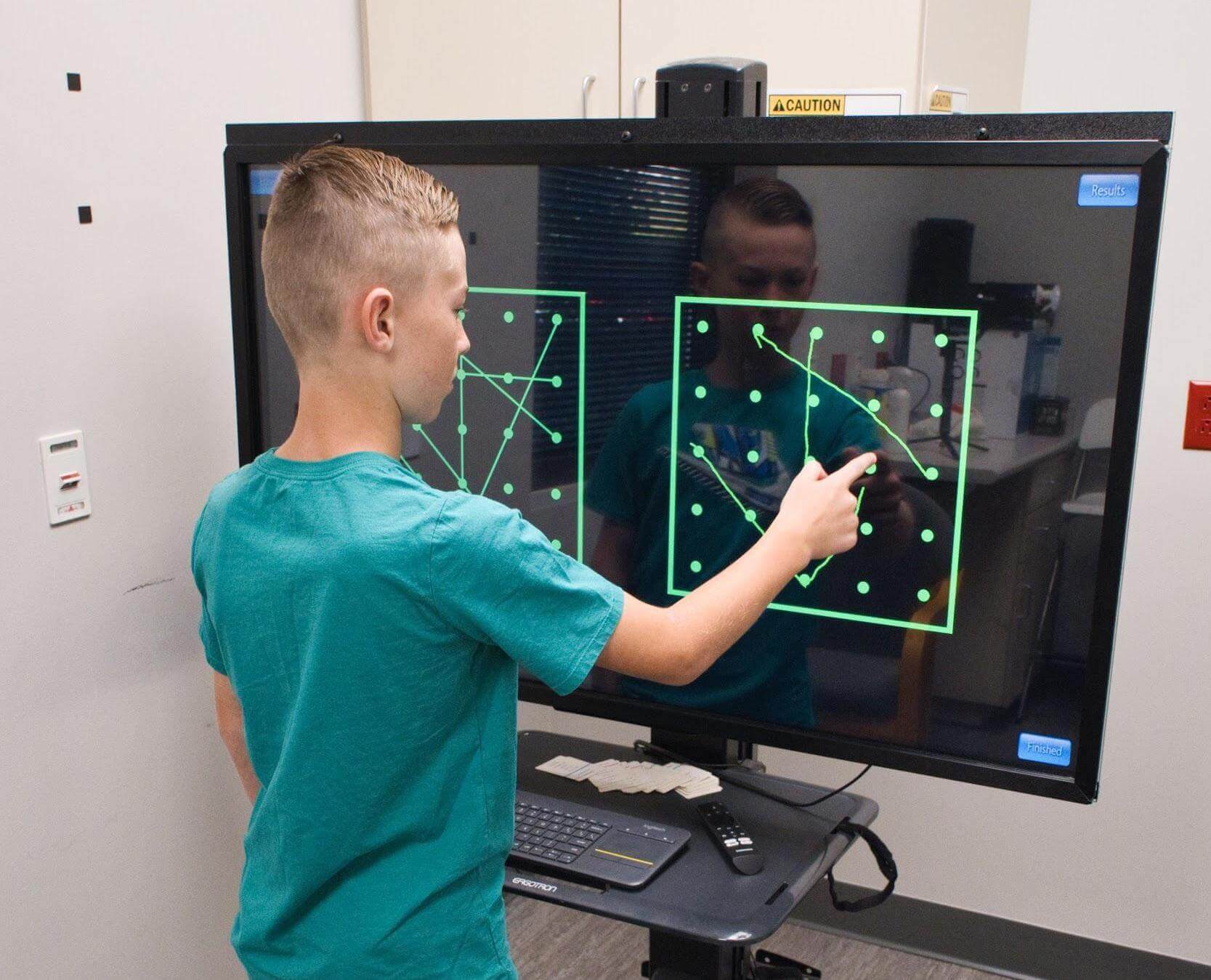
We use the results from the scan to design a tailor-made treatment plan for each patient using a variety of therapies, which we call Enhanced Performance in Cognition Treatment, or EPIC for short.
During treatment, patients follow a three-step system to help the brain cope with increased demands during your time with us:
- Prepare: Patients complete short bursts of cardio to improve blood flow to the brain. This helps the brain prepare for the activities that follow.
- Activate: Exercise is followed by different therapies that promote the brain’s ability to heal. This step uses a phenomenon in the brain called post-exercise cognitive boost (PECB). In simple terms, after exercise, the brain releases a series of neurochemicals that help it perform better.
- Recover: The last step involves periods of rest, allowing the brain to recover before the next therapy.
Patients cycle through this sequence repeatedly during treatment to restore healthy neurovascular coupling in the brain and reduce the incidence and severity of long COVID-19 symptoms, including headaches.
Our treatment combines a series of cardio exercises and other therapies, including cognitive, sensorimotor, neuromuscular, and vision therapies, to name just a few, which can help long COVID patients with persistent headaches in a variety of ways.
For example, during neurointegration therapy, our therapists will teach you several breathing and mindfulness exercises which can help relieve headaches, as well as make it easier to exercise and reduce stress.
To address headaches caused by vision problems, our therapists use Dynavision, visual tracking exercises, the Brock string, and other exercises. It’s important to remember that, while you can make significant progress during our EPIC treatment, vision issues and vision-related headaches may take more than one week to resolve. We can refer you to a vision specialist near you or help you with exercises to do at home.
If your headaches are caused by vestibular problems, our therapists will use several exercises to “retrain” your brain to process sensory information during movement, such as by balancing on one leg with your eyes closed or focusing on a point while moving your head.
Moving Forward
After treatment, our therapists meet with each patient to discuss exercises to do at home to encourage the brain to continue to improve. This includes, for example, post-care resources specific for long haulers dealing with both physical and emotional symptoms, and a series of activities (cognitive games and aerobic exercises) customized for each patient.
While you’re waiting for treatment, you can also take our online course on headache treatment. While it was designed primarily for patients suffering from a traumatic brain injury, long haulers will find most, if not all, of the material to be relevant and helpful in reducing headache severity.
Further reading on long COVID symptoms:
Our treatment is designed to help post-concussion patients recover from persistent symptoms. After just one week of treatment, these patients report a 60% improvement in symptoms on average. Thus far, we’ve seen similar results with long COVID patients who pass our screening criteria. To discuss your specific symptoms of COVID-19 and determine whether you’re eligible for treatment at our clinic, schedule a consultation.

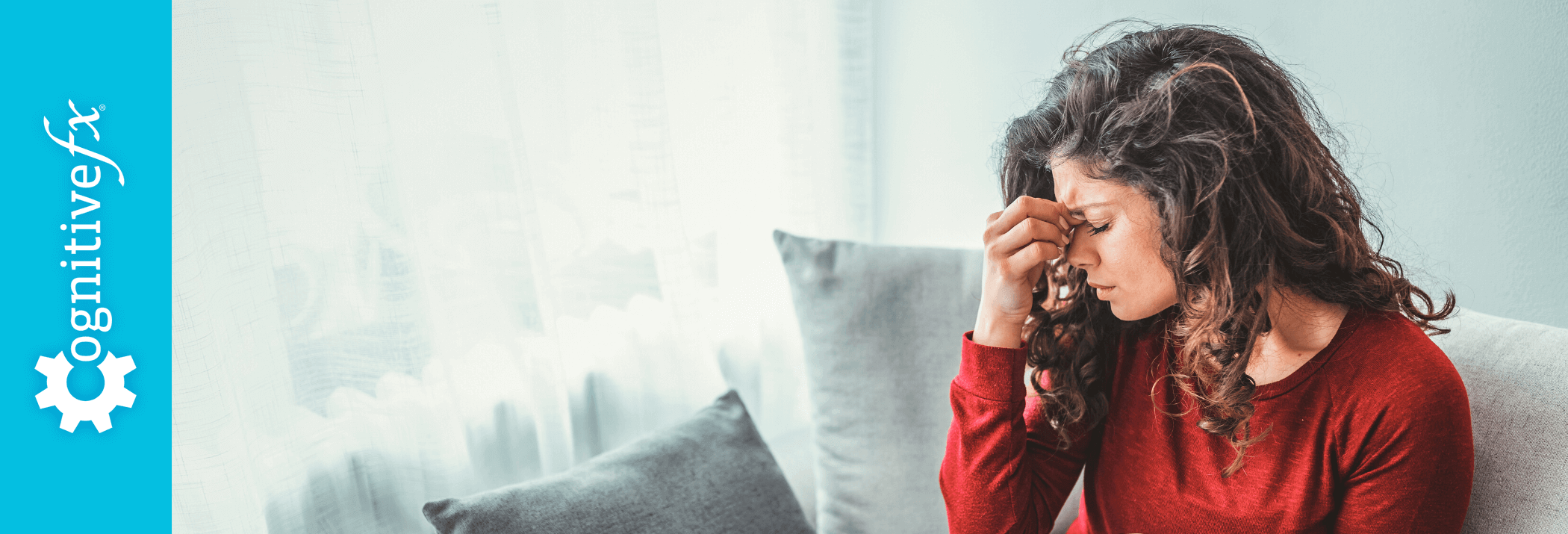











.png?height=175&name=image2%20(5).png)




